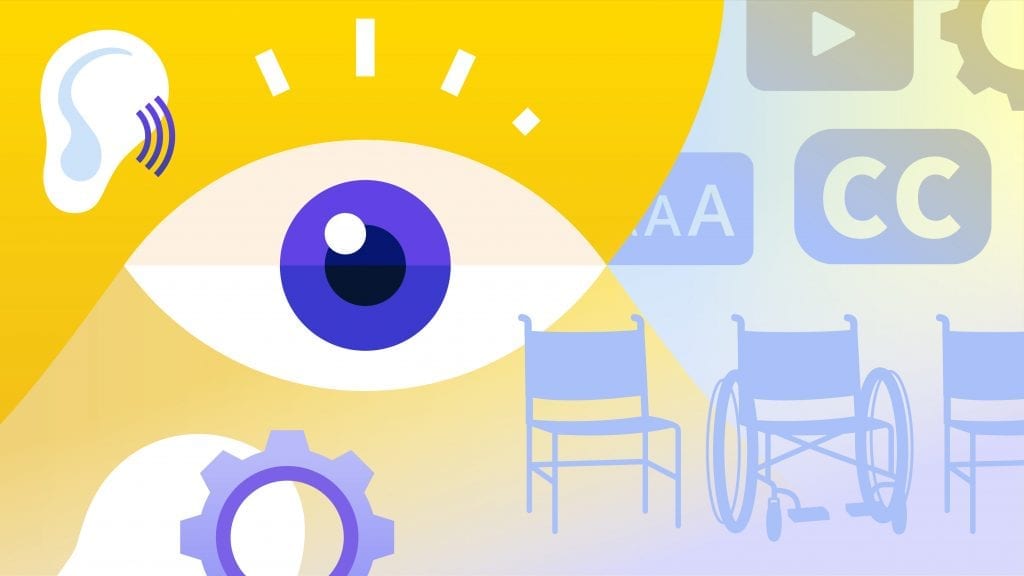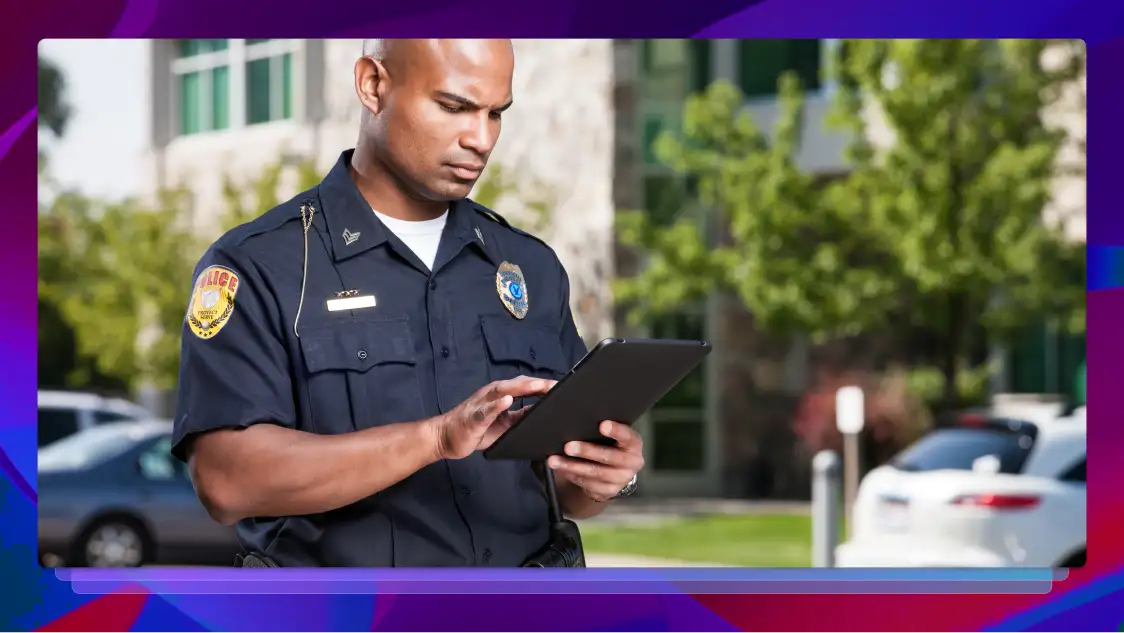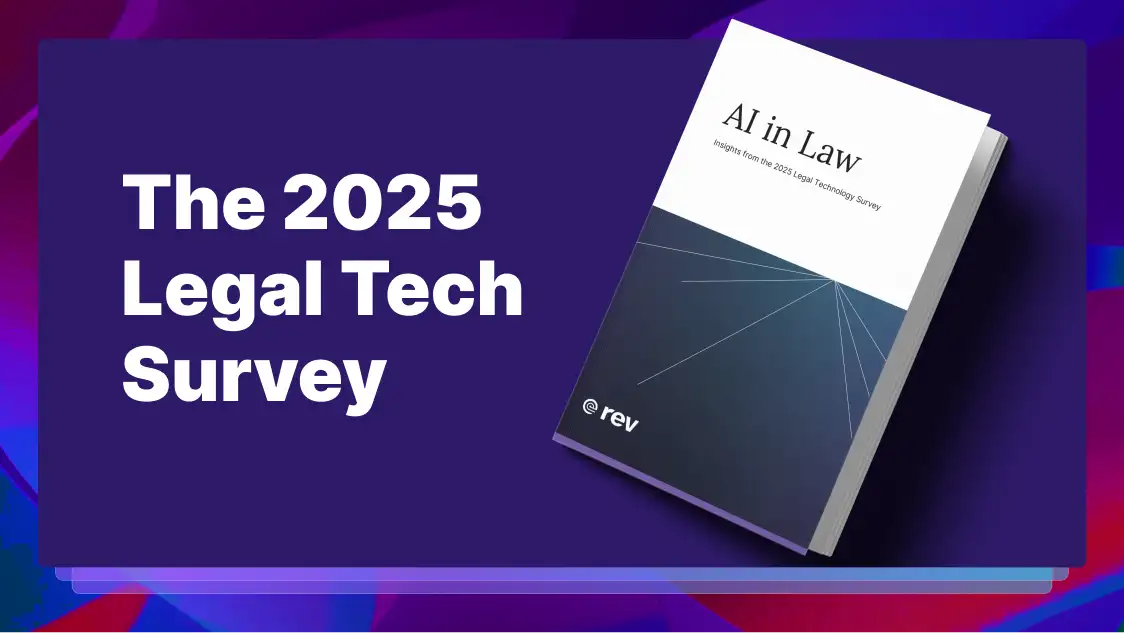Essential ADA Compliance in the Classroom
Educators have an obligation to ensure classroom accessibility for students with disabilities. Learn more about classroom accessibility with our guide.

Educators have an obligation to ensure classroom accessibility for students with disabilities. The Americans With Disabilities Act (ADA) requires providing inclusive classrooms in grades K-12. It dictates details in classroom design, teaching strategies, and the use of technological aids. ADA compliance also requires using communications tools, such as captioning and transcription services, to convey important information.
The American Disabilities Act and Education
U.S. Census reports show one out of every five people in the United States lives with a disability. The Americans With Disabilities Act prohibits discrimination against qualified individuals. This applies to state and federal governments, public institutions, and non-profit organizations.
Titles II and III of the ADA protect persons with disabilities in a variety of settings. This includes schools. As an educator, activities, lessons, and instructional techniques in the classroom cannot be geared towards simply reaching a broad group of children. Instead, ADA compliance in education requires you to pay close attention to the needs of students with disabilities. This includes:
- Ensuring all students have the opportunity to take part in and benefit from school programs and services;
- Providing students with disabilities the same types of opportunities and experiences other students enjoy;
- Making sure the quality of services and benefits provided is equal to those received by other students;
- Emphasizing classroom accessibility and providing the proper equipment to increase the student’s comfort and chances for success.
Understood.org, Tech Finder helps parents and educators find the personalized tools and resources they need for students with disabilities.
The ADA and Accessible Classrooms
The Americans With Disabilities Act requires that ‘reasonable accommodations’ be made for students with disabilities. In the past, this often involved separating them from their peers. This can result in missed opportunities and increased social stigma. It can also make bullying more likely to happen.
The American University’s School of Education recommends mainstreaming students through inclusive classrooms. ADA compliance and classroom accessibility play a major role in this process. Common types of disabilities to consider when planning classrooms include:
- Physical disabilities, including genetic conditions, chronic illnesses, or other issues which impact mobility;
- Sensory impairments, such as hearing and vision disturbances;
- Cognitive impairments, including learning disabilities, ADHD, and other disorders;
- Emotional impairments, which include major depression, bipolar disorder, anxiety disorders, and post-traumatic stress.
It takes varied approaches to accommodate students with disabilities. Classroom accessibility involves design elements, teaching strategies, technological aids, and communications. This includes utilizing ADA compliant websites, captioning, and transcription services. Inclusive classrooms provide all students with equal opportunities and the tools they need to succeed.
Do2 Learn offers a variety of tools for teachers and students, including this interactive wheel that suggests teaching strategies for children with Fetal Alcohol Syndrome (FAS).
Classroom Requirements For Students With Disabilities
The Americans With Disabilities Act aims to prevent discrimination against qualified individuals without causing an undue burden on school administrators. For students with disabilities, it covers academics, athletics, extra-curricular programs, public transportation, and off-campus activities in public school settings. As classroom accessibility is a civil rights issue, ADA compliance generally applies in private schools as well.
The ADA dictates design elements, such as space requirements in classrooms. It also impacts technology and requires modifications in classroom practices and policies. There are other federal laws that protect the rights of people with disabilities. These also help ensure ADA compliance. Requirements of these laws include:
Development of Individualized Education Programs (IEPs):
The Individuals with Disabilities Education Act (IDEA) requires identifying students in grades K-12. Individualized Education Programs (IEPs) detail any specialized instruction and technical help needed. IDEA also provides grants for early intervention programs, including communications aids.
Measurable Growth, Access to Activities, and information Technology:
The Rehabilitation Act of 1973 provides protections for a broad range of students with disabilities. This includes those not covered under IDEA. Section 504 of the Act requires documentation of measurable growth in the student. It prohibits schools from denying students with disabilities access to or participation in activities. Section 508 of the Act requires electronics and information technology to aid in classroom accessibility.
Assistive Devices and Services:
The Assistive Technology Act provides state funding for assistive devices and services for students with disabilities. Assistive Technology Act Programs (ATAP) include adapted personal digital assistants, braille printers, transcription services, and other aids or devices.
Ghotit Dyslexia Keyboard app features spelling and grammar corrections, phonetic word prediction, speech to text, and other tools designed to help children with reading and writing impairments.
Making Sure Your Classroom Is ADA Compliant
To ensure accessible classrooms, you need to be familiar with the laws preventing discrimination against qualified individuals.
Vanderbilt University identified five areas of focus in creating accessible learning environments for college students that meet ADA requirements. These apply equally well for students with disabilities in grades K-12. They include:
1. Physical Learning Spaces
Consider the location in the building, layout, and various technologies offered within. Accommodate student mobility issues, as well as for vision, hearing, and cognitive impairments. ADA requirements for classrooms dictate chair size, table heights, and aisle widths. Proper lighting is an important consideration. Pay attention to the spacing of computer terminals, lab equipment, whiteboards, and other aids.
2. Course Materials
Course management systems, such as Blackboard and Brightpoint, are invaluable classroom aids. They allow teachers to upload instructional materials, assign tasks, and track progress. Educators must make students aware of accessibility features these programs offer. ADA requirements also apply to all auxiliary aids and services used. Use transcription and captioning for all audio or video instructional tools created.
3. Communication With Students
It is important to communicate your goals in being ADA compliant and creating an inclusive classroom. Vanderbilt recommends adding an inclusive learning statement to your syllabus. Be aware of students in your classroom with IEPs. Approach each individual to ensure they are being provided with what they need. Use a variety of methods in communicating with both the student and their parents. Consider if classroom policies impact students with disabilities.
4. Class Environment
Inclusive classrooms engage and encourage involvement from all students, including those with disabilities. Aim at reducing social stigma and marginalization through interactive group activities. Conduct activities in a variety of formats to ensure students with disabilities are able to contribute. Be alert for biases and microaggressions in the classroom and address them as soon as they occur.
5. Out of Class Activities
Inclusive classrooms take into account the varied settings your students find themselves in. This includes labs, school assemblies, and field trips. To ensure ADA compliance, make sure students with disabilities have what they need in these and other situations.
What Are The Repercussions Of Not Having An ADA Compliant Classroom?
The Department of Justice enforces ADA compliance. Discrimination against qualified individuals can result in fines and the loss of state or federal grants. It can also expose teachers and administrators to legal actions, including civil lawsuits. At Rev, our goal is to help you avoid these repercussions. Our transcription and captioning services are ADA compliant. As a result, they help students engage and overcome impairments.
Subscribe to The Rev Blog
Sign up to get Rev content delivered straight to your inbox.



